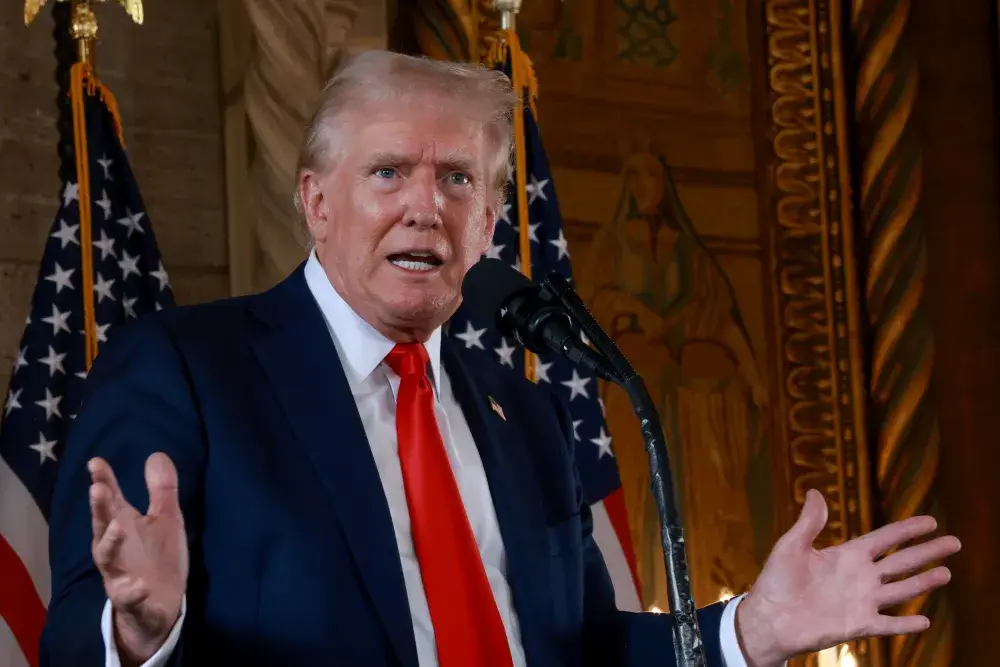Southeast Asia Once Benefited, Now Struggles Under Trump’s Trade Policy
Bangkok, Thailand — What started out as a chance in 2018 has become a problem for the economy. Southeast Asia used to benefit a lot from the trade battle between the US and China. Now, though, it is stuck between the two biggest economies in the world during President Donald Trump’s second tariff campaign.
The region’s “China Plus One” supply chain strategy, which was based on getting businesses to leave China because of its tariffs, was what first brought in international investment and helped industry flourish. But seven years later, the same approach is under pressure because new US tariffs are making trade harder and China is sending more goods to ASEAN markets.

Source: Variety
Tariffs Hit ASEAN Exports as Trade Tensions Escalate
The revived trade war has made it more expensive for Southeast Asian countries to export products. The “liberation day” tariffs in April added 49% to the cost of Cambodian goods, 48% to the cost of Lao goods, and 46% to the cost of Vietnamese goods. Thailand (36%) and the Philippines (17%), which are strong US allies, were also affected.
Most nations now pay tariffs of between 10% and 20%, although Myanmar and Laos still have to pay hefty 40% tariffs. The most recent round adds a 40% duty on “transshipments,” which are commodities that are sent via ASEAN to get around rules on Chinese exports. Nick Marro, a global trade expert at the Economist Intelligence Unit, says that this action has put the China Plus One model “squarely in Washington’s crosshairs.”
Economic Growth Forecasts Revised Downward
The Asian Development Bank (ADB) has lowered its prediction for Southeast Asia’s GDP growth in 2025 from 4.7% to 4.3%. This was because of the new trade environment created by tariffs and changing agreements. Its forecast for 2026 is still low at 4.3%, which shows that there is still uncertainty about how global commerce will change.
At the same time, Chinese exports to the area have skyrocketed, going up 12% to $586 billion in 2024 and another 14.7% in the first nine months of 2025. Experts say that ASEAN countries are getting a lot of cheap Chinese goods, from steel to consumer electronics, as Chinese corporations look for new markets because US demand is falling.
Recommended Article: Pennsylvania’s Erie Torn Amid Trump Tariffs and Economic Strain
ASEAN Strikes a Balance Between Two Big Economies
Jayant Menon, a senior scholar at Singapore’s ISEAS–Yusof Ishak Institute, said, “Southeast Asia is walking a tightrope, trying not to pick sides between the US and China.”
China is still ASEAN’s biggest commercial partner, but the US is very important for investment, defense cooperation, and access to markets. Trump’s additional tariffs, on the other hand, have made things worse, forcing ASEAN countries to bargain separately instead of together. Analysts believe this is similar to Washington’s “divide and deal” policy.
Rising Chinese Imports Stir Concerns Over Market Disruption
Local businesses are worried about the flow of cheap Chinese goods. As the Chinese yuan loses value and there is too much manufacturing at home, firms are being accused more and more of “dumping” goods in ASEAN markets.
Marro added, “We’ve seen governments worry about the possibility of Chinese goods flooding the market.” “It’s not just phones and electric cars; it’s also steel, textiles, and other basic goods.” Still, most ASEAN nations are afraid to approach China openly because they don’t want to upset important supply lines.
Experts Warn of Long-Term Vulnerabilities
Analysts fear that the region’s present neutrality might be expensive. Ian Chong, a political scientist at the National University of Singapore, said that ASEAN’s unwillingness to take sides might make it harder for it to change things.
Chong added, “They thought Washington and Beijing would fight for their favor, but instead, they’re being squeezed by both.” Menon said that things may become even worse and that Trump’s trade moves could get worse too. He said, “Trump loves tariffs.” “I don’t think he can be stopped,” he said. “He’s been clear that he will use them to cut deficits.”
Trump’s Asia Tour Highlights Risks of a Fragmented Global Trade Order
As Trump prepares for his diplomatic tour to Southeast Asia, the region faces an unsettling truth: the same trade conflict that once opened up economic opportunities now threatens development, investment, and stability.
ASEAN leaders must find a delicate balance between working together and competing for now. They must also try to keep the economy strong in what many economists call a new age of global trade fragmentation.























